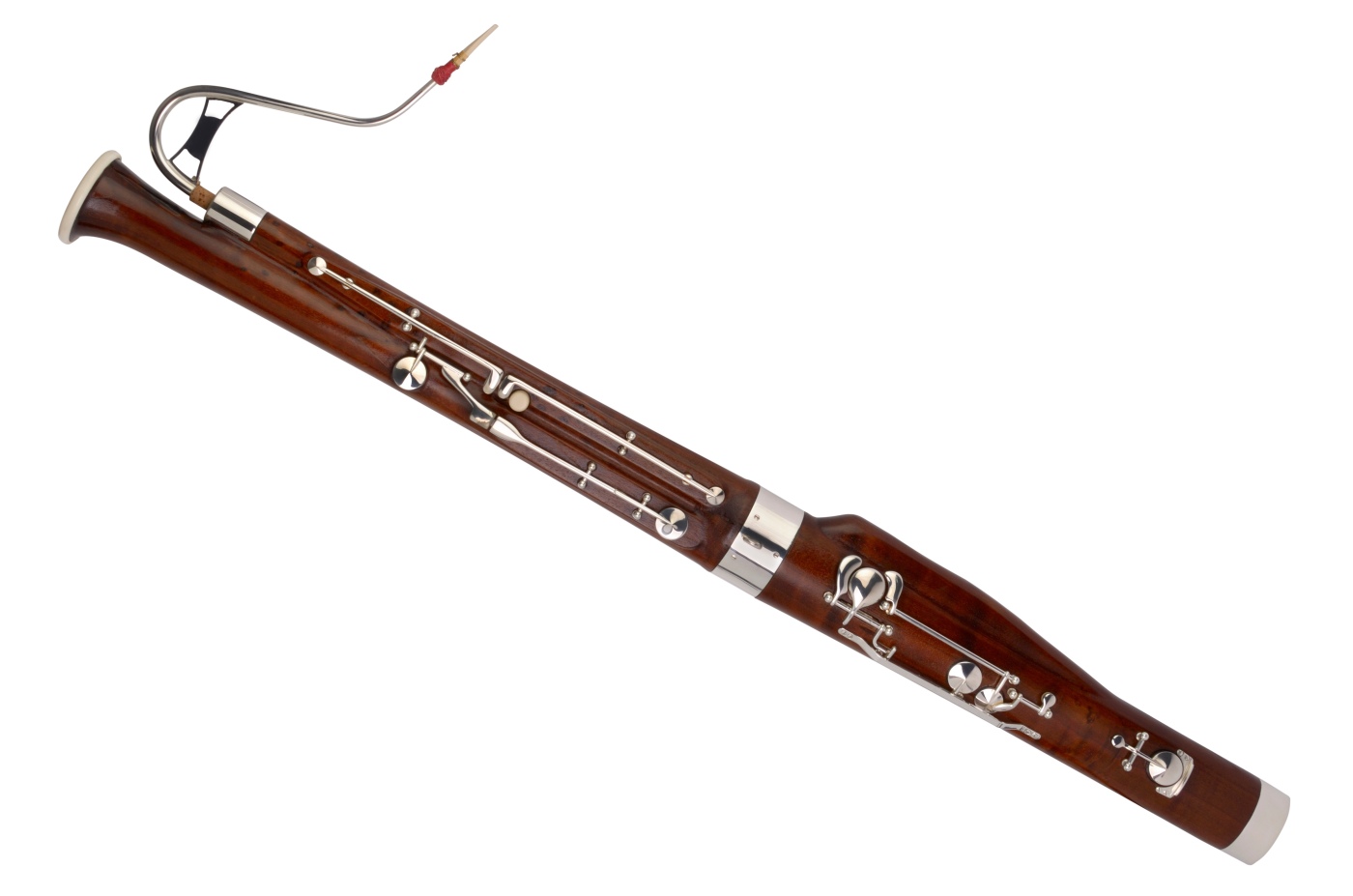This week I am continuing my series of posts on instruments of the wind family with the bassoon.

What Is the Bassoon and How Do You Play It?
- The bassoon is a member of the woodwind family of instruments, so called because most of these instruments were once made just from wood, though many use various different materials, and because you play them with your own breath or wind.
- It is the largest musical instrument in the wind family measuring roughly 53 inches in length.
- However, the bassoon is an instrument that is made from a very long tube which is sort of folded over on to itself. And if you stretched the whole tube out into one long tube it would measure a massive 102 inches long!
- As the bassoon is a very large instrument with a very long tube for sound to travel through, it is an instrument that produces low notes.
- So, if you want to be a bassoon player you would, ideally be quite tall with large hands just to physically hold and play the instrument.
- A person who plays the bassoon is called a bassoonist or a bassoon player.
- Much like the oboe, which I have written about in a previous blog post, the bassoon is a double reed instrument. This means that its mouthpiece is made from 2 reeds that are sandwiched together. A bassoon player will blow through these reeds to make them vibrate and push this vibrating air through the main tube of the instrument.
- A bassoonist will often make their own reeds, again like an oboe player, making many more than they will actually use.
- A bassoon’s reeds can come indifferent lengths, some longer or shorter, and some can be harder than others or softer than others. And the size and how hard or soft the reed is can change the sound and tone that a bassoonist can make with their instrument.
- The bassoon is made up of 5 parts:
- An S-shaped piece called a crook or bocal and made of metal. This is what the reed is attached to.
- The tenor joint, attached to the crook, and containing almost all of the keys that a bassoon player will press to play different notes.
- A double joint, or boot making the U shape of the instrument, and getting the bassoon’s tube to double back on itself.
- The long joint, or bass joint, which is conical in shape and connects to the end of the bassoon.
- The bell joint, right at the end of the instrument, where the vibrating air escapes from the bassoon.
History of the Bassoon
- Bassoons are descendants of various instruments developed in the 16th Century including the sordone, the shawm, the rankett and the dulcian (or curtal)
- The earliest bassoon, though using a double reed, looked similar to a large recorder.
- Over the course of the 18th Century inventors played with the way the bassoon was shaped to try to make it more playable and easier for a musician to handle.
- It wasn’t until the early 1900s, though, that two makers Heckel in Germany, and Buffet in France developed the bassoons that are in use today.
- The German Heckel bassoon is the most commonly used bassoon, with the French Buffet still used in some parts of Western Europe, and in Latin America.
Bassoon World Records
- Bassoons generally costs more than other woodwind instruments, as they are much larger and harder to make.
- In my research for this post I could not find details of a specific instrument that is the world’s most expensive, but I did see that German manufacturer Heckel does make the most expensive bassoons with prices reaching up to $51,000!
- There is still a gap in the Guiness Book of World Records for a record involving the bassoon, so if you are planning on getting a record in this book, learning to play the bassoon and attempting a World Record may very well be a good route to achieve this. And you might have a great time learning a wonderful musical instrument at the same time.
Famous Bassoon Players
- Famous bassoon players include the composer Edward Elgar, Julie Price, Albrecht Holder, Judith LeClair, Sir Mark Elder and Illinois Jacquet.
What Does the Bassoon Sound Like?
If you are interested in hearing what a bassoon player sounds like, here is a video of Bassoonist Theo Plath playing a piece by composer Paganini, Caprice No 5:
If you have enjoyed reading my blog post, thank you. I am always looking for ideas for the blog, so would love to hear from you with suggestions for topics you would like me to cover in the future. Also, if you would be interested in supporting me to keep this blog running, buying the books to review here, and supplies to make the DIY instruments, for example, I would be absolutely delighted if you would consider buying me a coffee using the following link: Buy Me A Coffee Thank you!!

This taught me to play among us drip on my bassoon
LikeLiked by 1 person
XD
LikeLiked by 1 person
Fantasfic items from you, man. I have hqve in mind your sstuff revious to
and you’re jut extremely wonderful. I actuaoly like whwt
you have acquired here, certainly like wat you’re
saying and the way in which through which you assert it.
Yoou makle itt enjoyable annd yoou still take care of tto eep iit sensible.
I cant wait to leazrn mujch more ffrom you.
That iss actually a wonderful site.
LikeLike
Thank you very much! Glad you’re enjoying the site!
LikeLike